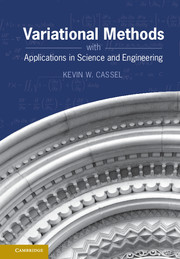12 - Numerical Grid Generation
from PART III - OPTIMIZATION
Published online by Cambridge University Press: 05 July 2013
Summary
We have to make every effort to understand for ourselves what the dangers are, and this points up a fundamental thing about computers: They involve more thought and not less thought. They may save certain parts of our efforts, but they do not eliminate the need for intelligence.
(Norbert Wiener, Computers and the World of the Future, 1962)Our final application of optimization theory is in grid generation, which is an important topic in many computational fields in which we desire to obtain numerical solutions of partial differential equations with complex physics and/or on domains with complex shapes. When choosing a numerical grid on which to solve differential equations, it is necessary that the grid both faithfully represent the geometry of the domain and be sufficiently refined in order to maintain the numerical truncation errors at an acceptable level. Traditionally, this has been done in a rather ad hoc manner by choosing a grid that “looks good” in some qualitative sense. Calculus of variations allows us to optimize the choice of a grid in a formal manner by explicitly enforcing certain criteria on the generation of the grid, thereby providing a more intuitive and mathematically formal basis for grid generation. Variational grid generation is generally formulated to produce the “best” grid in a least squares sense, eliminating the trial and error necessary in other grid generation approaches, such as algebraic and elliptic grid generation.
Information
- Type
- Chapter
- Information
- Variational Methods with Applications in Science and Engineering , pp. 379 - 402Publisher: Cambridge University PressPrint publication year: 2013
